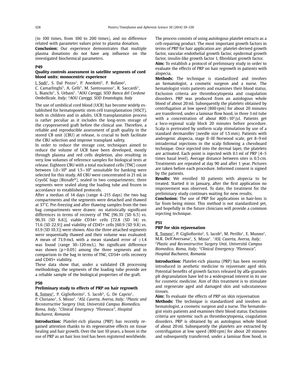Quality Controls Assessment in Satellite Segments of Cord Blood Units: Monocentric Experience
May 2014
in “
Transfusion and Apheresis Science
”

TLDR The study found that the quality of cord blood units remains consistent before freezing and after thawing, indicating that attached tube segments reliably represent the graft's properties.
The document reports on a study assessing the quality of cord blood units (CBUs) for hematopoietic stem cell transplantation (HSCT). The study involved 18 CBUs with a total nucleated cells (TNC) count between 1.0×10⁹ and 1.5×10⁹, which were concentrated and cryopreserved. After a median of 14 days, samples from the CBUs were thawed and analyzed. The results showed no statistically significant differences in recovery of TNC (96.3%), viable CD34+ cells (72.8% vs. 71.6%), and viability of CD45+ cells (60.9% vs. 61.9%) before freezing and after thawing. Additionally, the volume of three attached segments was measured, with a mean of 73.9 mcL (range 30-120 mcL), and no significant difference was found among the segments or compared to the bag in terms of TNC, CD34+ cells recovery, and CD45+ viability. These findings suggest that the segments of the loading tube are a reliable sample of the biological properties of the graft.